Yadira Martinez and her elderly mother, Teresa, were stranded in their damaged home tucked away in the mountains of Puerto Rico.
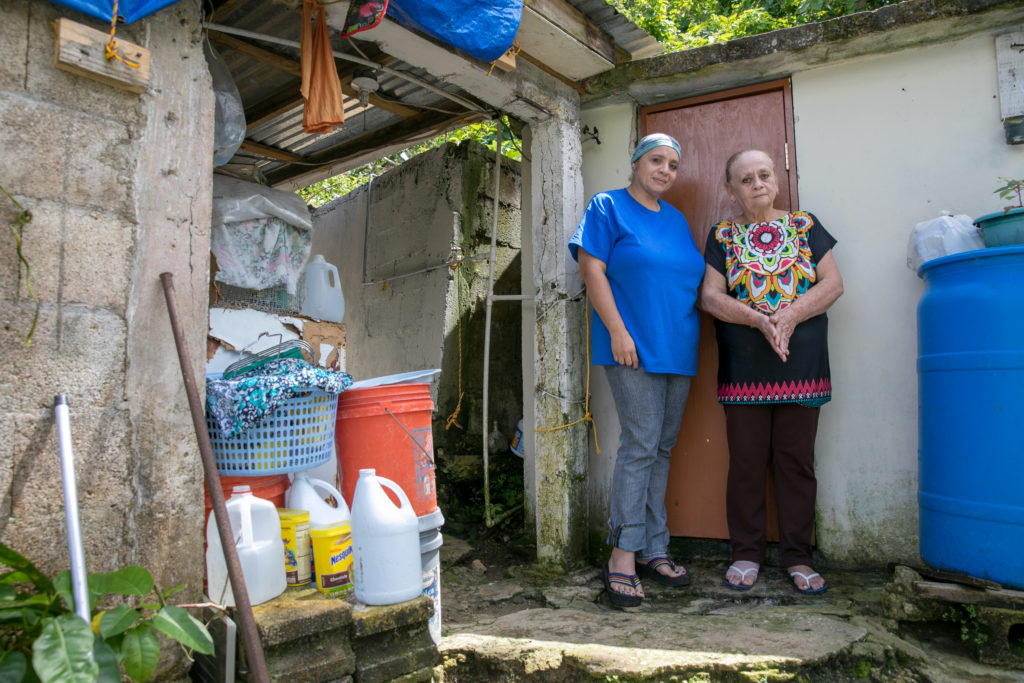
A blue FEMA tarp served as their roof, while fallen trees blocked their only way out.
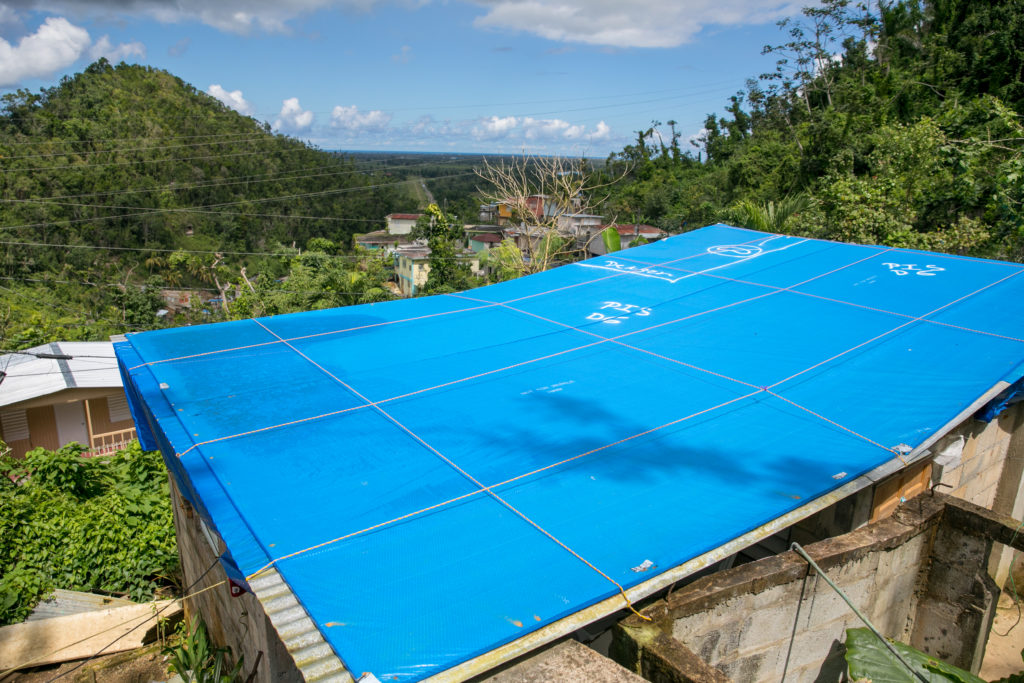
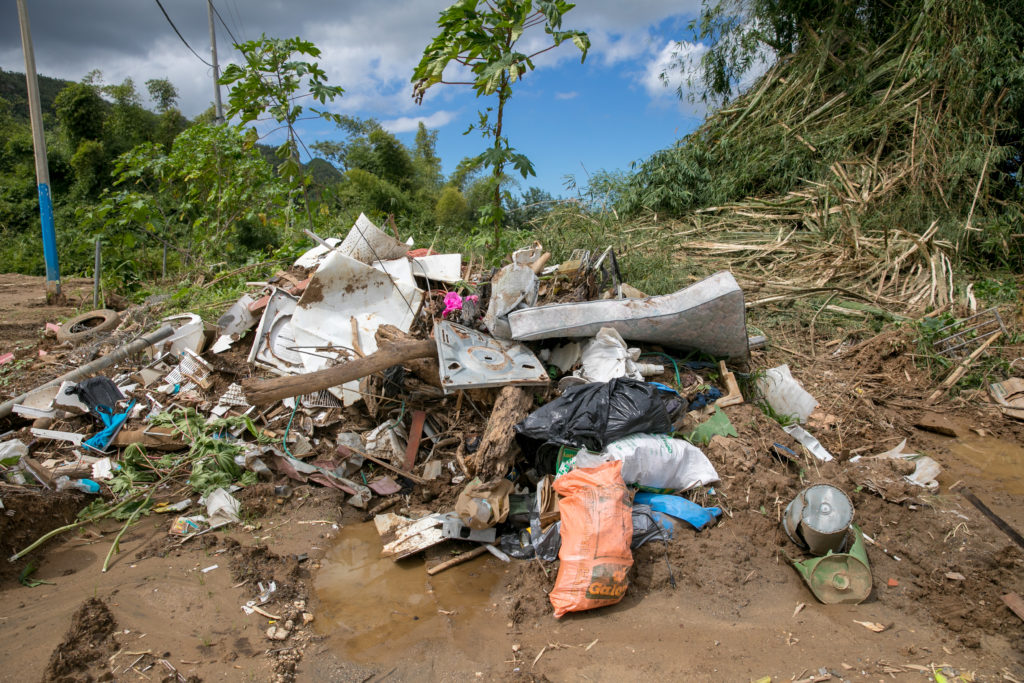
The small house lacked electricity and other basic necessities. Their situation seemed utterly hopeless—until a local couple from their parish arrived to clear a path to their house.
Father Gabriel Sánchez, their young pastor at the time, brought comfort to them inside their home.
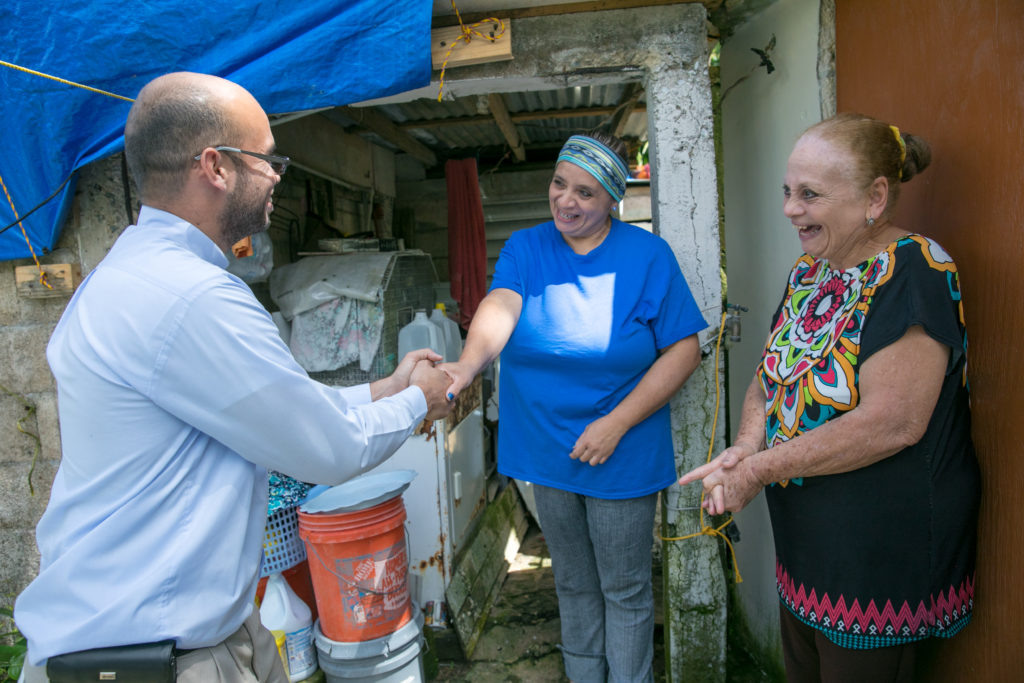
Government and relief agencies were unable to reach mountain communities after Hurricane Maria in 2017. This is primarily due to the remoteness of the villages and the agencies’ lack of knowledge of the terrain. But local parishes knew the landscape and people. Even though their churches were destroyed or badly damaged, faith communities in these towns stepped up to help their abandoned neighbors in the immediate aftermath and in the seven years since.
Their work has been lifesaving, and their relentlessness has proven that in the wake of disaster, love is a stronger force than even a hurricane.
With the help of Catholic Extension Society, churches in Puerto Rico are being fortified to withstand future natural disasters. Some are large and grand, such as San Juan Bautista, the oldest cathedral under the American flag. The sacred space breaks ground on March 31 to begin its long-awaited repairs, marking a sign of hope and renewal for all the people of Puerto Rico.
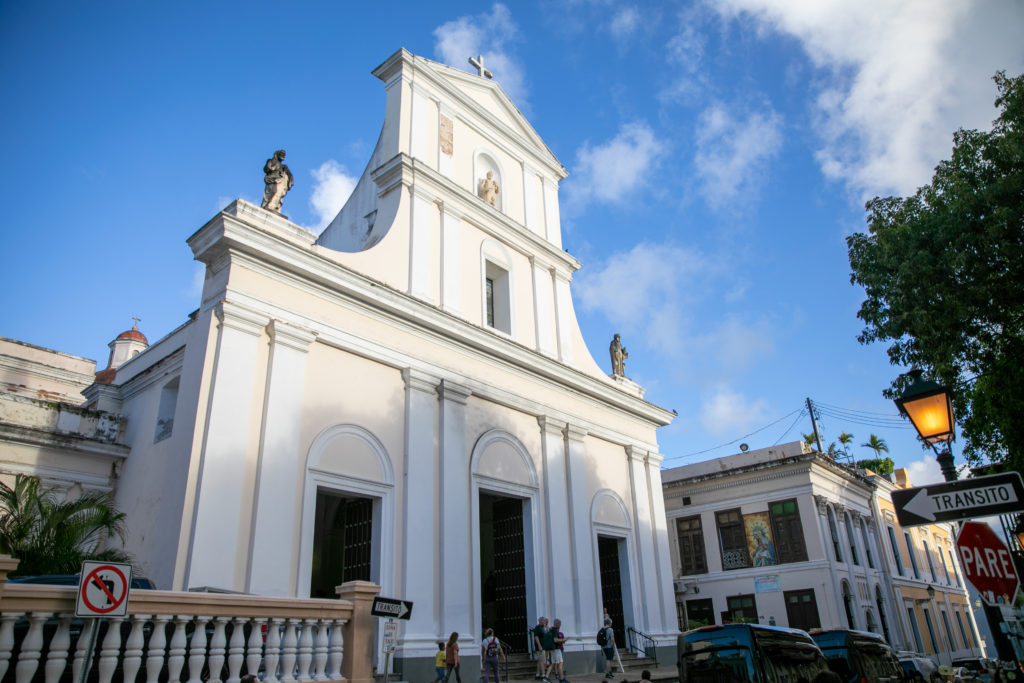
However, most of the Catholic structures that are part of this massive rebuilding project (600 Catholic churches in total) are much smaller—but only in size, not in spirit.
Faith endures through peril
This is St. Cecilia Parish in the densely forested village of La Planta.
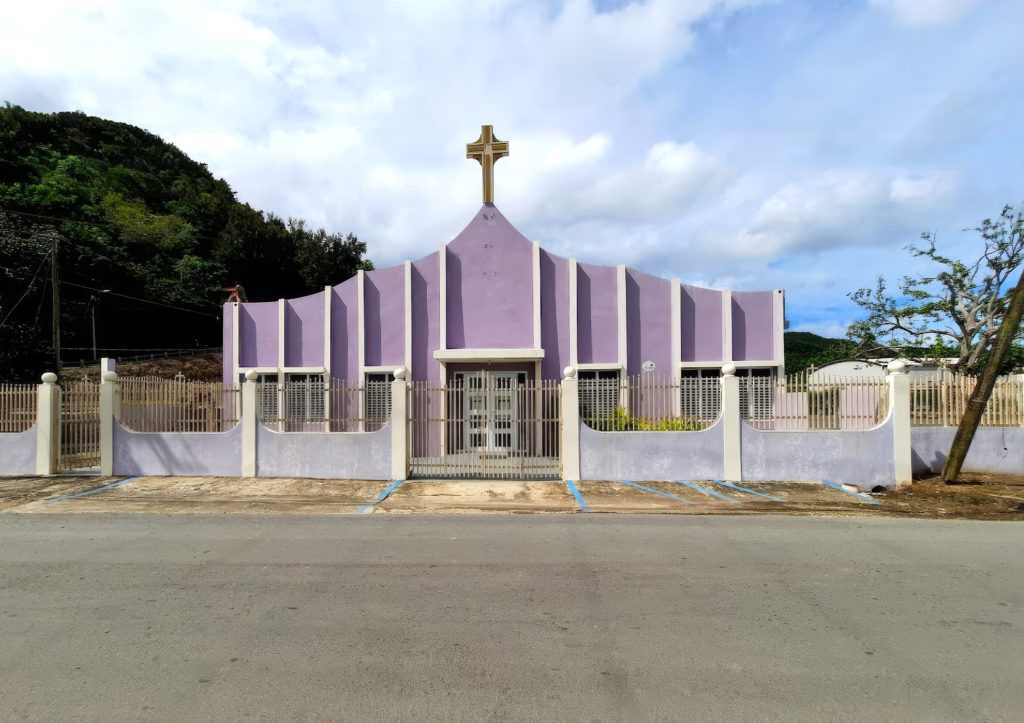
Father Sánchez was the church’s pastor at the time. The parish became a first responder in the wake of Hurricane Maria.
Mud and sticks had blanketed the poor mountainous region, as seen below, making roads impassable. Hurricane debris had violently entered the church. Parishioners quickly mobilized to help one another.
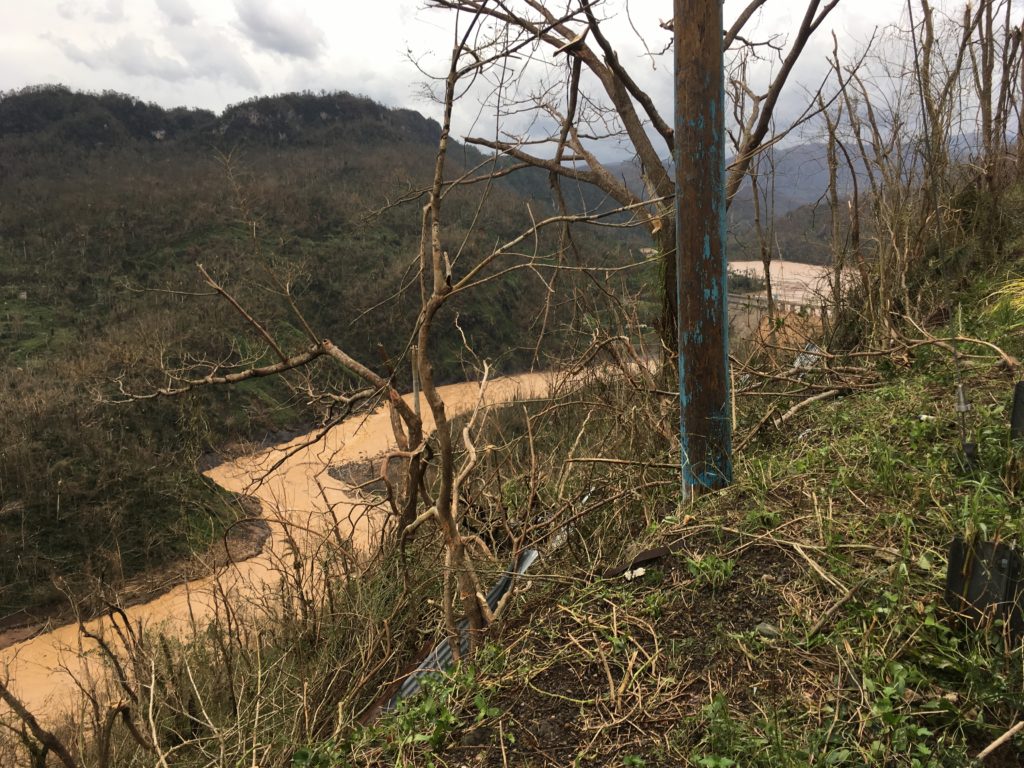
St. Cecilia began distributing water from a nearby pump because homes had no running water. Numerous families showed up to fill gallons for their households.
“I was able to see the response of a whole village,” said Father Gabriel Sánchez, who pastored the parish at the time.
A few days after the hurricane, with phone and internet lines down, Father Sánchez posted handwritten postcards around the area, asking people to help clean up the church. About 20 people joined the effort.
He said,
That was something that edified me—the beauty of the unity and what we can achieve when we take each other by the hand and work together.”

He also displayed a message on the church’s front gate, inviting parishioners to gather for Mass at 8:00 a.m. on Sunday. They would worship outdoors due to the mud that had amassed inside the church.
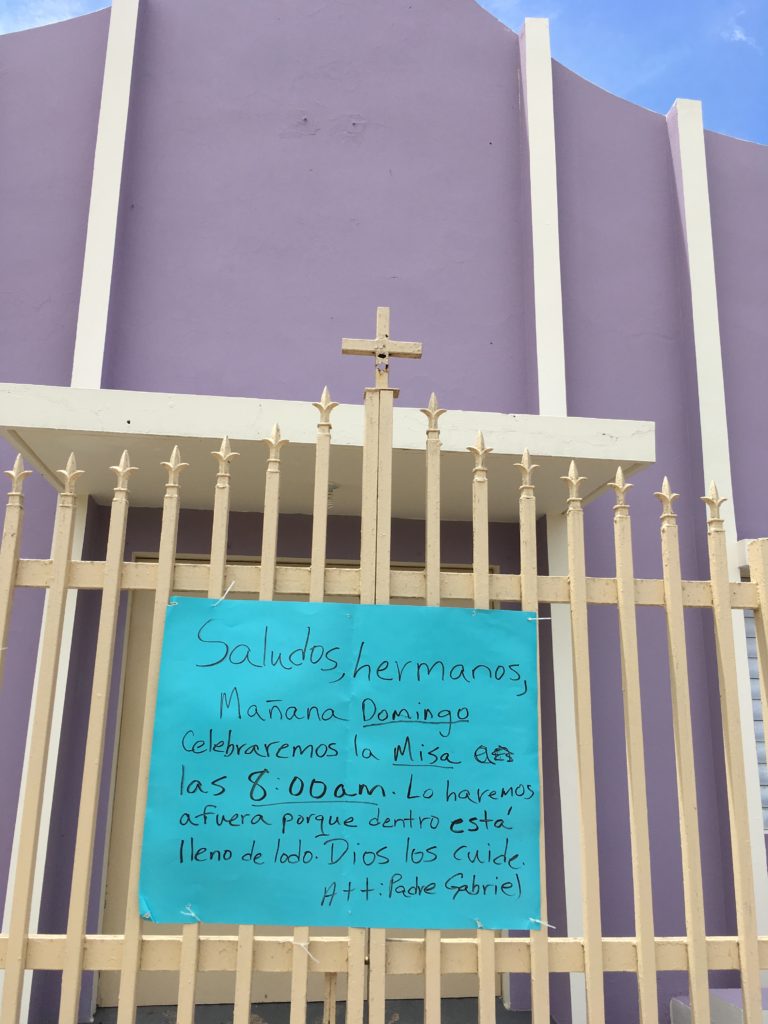
Fifty people crammed in a simple shed outside St. Cecilia to celebrate Mass. Nothing was going to stop them from worshipping. These sacred grounds became a sanctuary amid the chaos.
More importantly, Father Sánchez saw a special kind of faith unfolding.
“[This Mass] opened paths of encounter,” he said. The gathering paved the way for spiritual growth and healing in the community. Together, with a shared trust and faith in God, rebuilding their island is possible.
Mountain mission marches on
For the past two and a half years, Father Sánchez has been serving St. Rafael Archangel Parish in the coastal community of Quebradillas and its eight mission chapels.
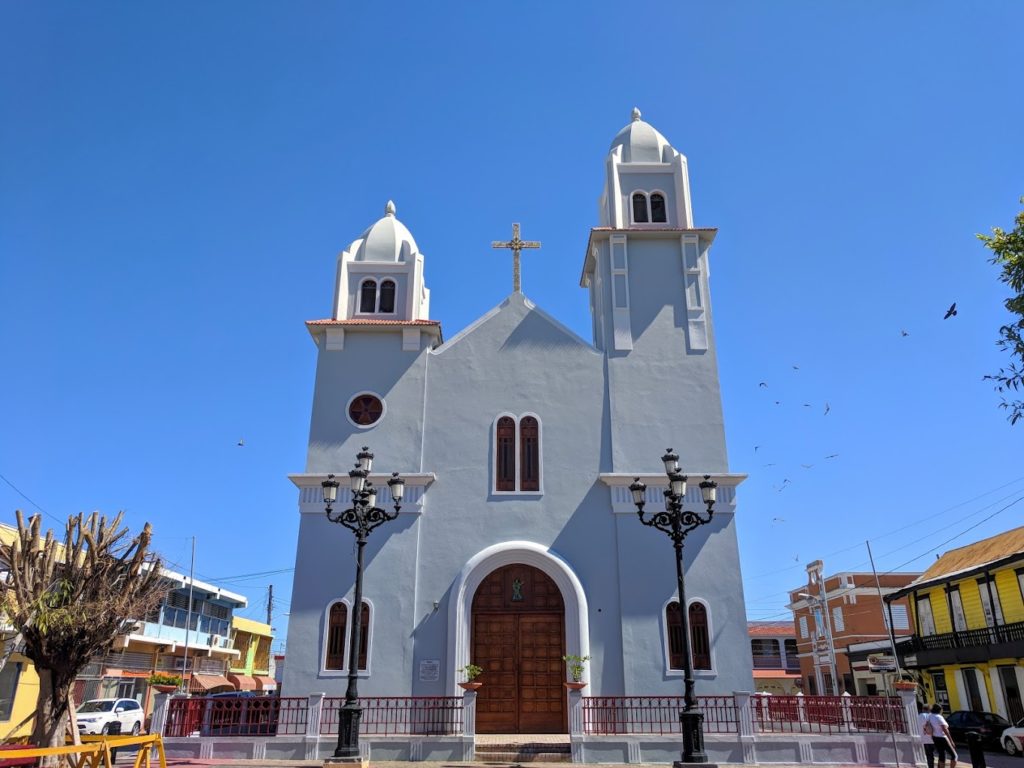
Like St. Cecilia, these parishioners live in economic poverty, and their churches were badly damaged by Hurricane Maria.
“They are the poor of the Lord, they are humble, they are the ones who teach us the beauty of living with what is necessary and living happy,” Father Sánchez said.
Their gratitude is admirable. If you help one of these people, who are known to be totally dependent on God, those people will express thanks to you for the rest of their lives.”
These churches are more than places of worship; they are the heart of these remote communities, and they offer a sense of connection and belonging.
Additionally, St. Rafael Archangel Parish brings food to people, offers water and provides electricity bill assistance. Several of its priests and deacons also give house blessings.
These small acts of charity remind the people in these often-overlooked places that they are seen, dignified and cared for.
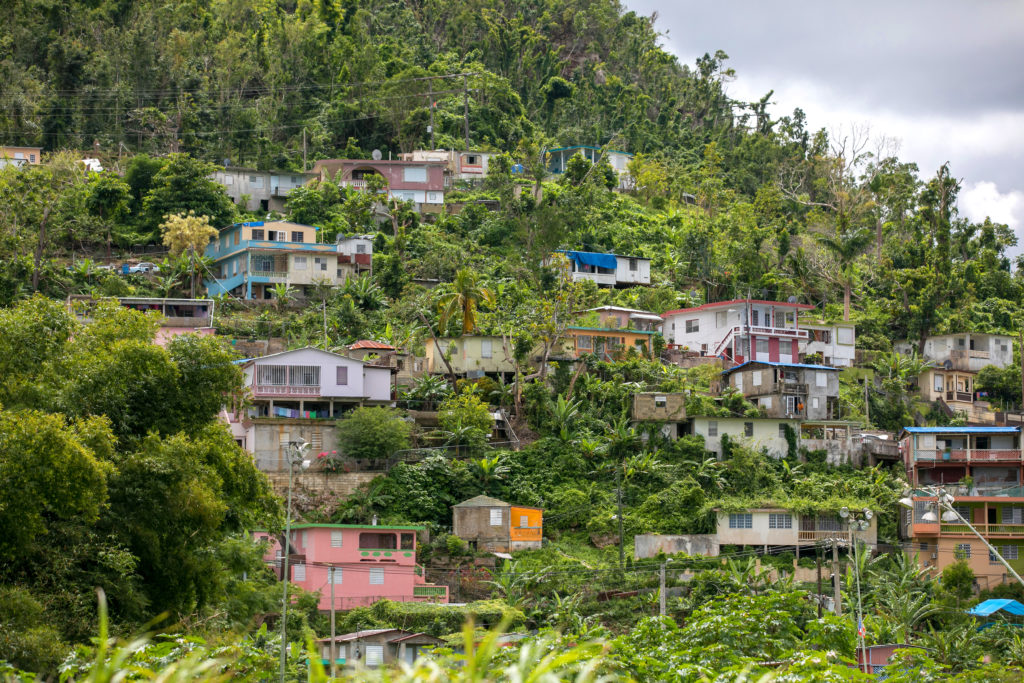
It is Father Sánchez’s mission to build solidarity amid the island’s hardships. His flock teaches him how to do this. They are a family and feel a shared responsibility to give each other a hand.
Rebuilding for the future
St. Rafael Archangel and St. Cecilia parishes are positioned to receive FEMA funds for their repair and reconstruction projects. This is thanks to Catholic Extension Society’s investment in the up-front cost to perform damage assessments and provide staff to help churches navigate the lengthy FEMA recovery process.
Hundreds of parishes like these have played a lifesaving role since Hurricane Maria by providing physical and spiritual support to local residents. They have helped others see light when there is darkness. They have reinforced the belief that the long road to recovery is found in the people’s solidarity, generosity and trust in God.
This is why Catholic Extension Society, through the determined leadership of our Chancellor, Cardinal Blase Cupich, and President, Father Jack Wall, has invested so heavily in the past seven years to ensure these churches can rebuild. Because when we rebuild the churches in these remote communities, we also rebuild Puerto Rican society. The long-awaited resurrection is on the horizon.
In an interview with us, Father Sánchez reflected on how God’s faithful presence with the poor during Hurricane Maria inspires him in his ministry today:


